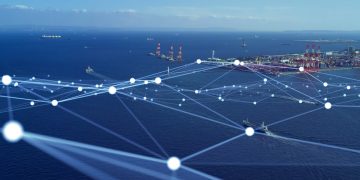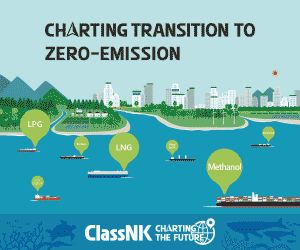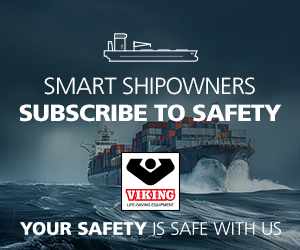The Britannia P&I Club has recently reported an increased number of enquiries regarding the carriage of containers on bulk carriers.
This is mainly driven by current favourable freight rates in the container market making this an attractive cargo for bulk carrier operators to carry.
To ensure that P&I cover is not prejudiced and that operators are advised on other potential liabilities arising from carrying containers on a bulk carrier, the Club’s Underwriting department should be notified as soon as possible.
Although containers can be carried perfectly safely on a bulk carrier, there are certain considerations that should be taken into account before accepting containers as a cargo
First, operators need to conduct a thorough risk assessment to identify any potential shortcomings or pitfalls that need to be addressed before the carriage of the containers can be accepted.
This includes consulting the vessel’s Classification Society (Class) and Flag State for their guidance as to whether any modification to the vessel or additional equipment will be required. As a minimum the risk assessment should cover the following areas:
- Stability Calculations:– The loading of containers on a bulk carrier may result in a larger metacentric height (GM) especially when containers are loaded on deck and thereby affect the motion and potential stress on the hull and cargo securing equipment. The vessel’s stability should be calculated prior to departure on the basis of the loading plan received. The approved onboard loading software may need to be updated to accommodate the loading of containers and the calculation of lashing forces.
- Cargo Securing: If the onboard Cargo Securing Manual (CSM) does not specifically cover the carriage of containers or allow for them to be loaded, Members should consult the Classification Society in order to obtain approval and the CSM should be amended accordingly. This may also require additional lashing equipment to be provided, or for an alteration to the current onboard lashing arrangement.
- Cargo Stowage: The containers should be stowed so as to permit safe access for the crew in the necessary operation of the ship. The stowage should also take into account any required checks of the cargo during the voyage and potential emergency scenarios. For stowage of containers on deck the International Maritime Organisation’s bridge visibility requirements should be taken into account.
- Hatch Cover/Tank Top Strength: The hatch covers on a bulk carrier will not normally be designed to accommodate containers. The hatch cover manufacturers should be consulted to determine what impact the loading of containers may have on the hatch covers and whether any modifications will be required. It will also need to be verified that the container stack weights do not exceed the maximum permitted weight load on the tank top. These considerations should take into account the adequate distribution of the point load.
- Carriage of Dangerous Goods (DG): DG cargo in containers should be carried in accordance with the IMDG code. The ship’s Document of Compliance for the Carriage of Dangerous Goods may need to be amended by Class or Flag State to accommodate the carriage of DG cargo in containers.
- Fire Fighting Equipment (FFE): Additional FFE may need to be installed or placed onboard. This may include lances to penetrate and flood containers in the case of fire and the instalment of a fixed under-deck firefighting system if the ship is to carry DG cargo. The onboard fire plans should be updated accordingly and may require additional approval by the Classification Society or Flag State.
- Safety Management System (SMS): Member’s SMS should contain adequate procedures ensuring the safe carriage of containers on bulk carriers. If Member’s International Safety Management System (ISM) has been audited by Class or Flag State on the basis of only operating bulk carriers and listed as such on Member’s ISM.
- Document of Compliance (DOC): The issuing body should be consulted for further guidance. The Company’s risk assessment library and work safety procedures, such as the Job Hazard
- Assessment: It may also require a structured review based on the change management approach adopted by the company.
- Cargo Gear: In cases where a ship’s cranes are to be used to load/discharge the containers, this should be taken into account in the preparation of the lifting plan. The crane operators should have the necessary experience required. Also the crane manufacturer may need to be consulted to ensure the cranes and the associated lifting equipment can accommodate containers.
- Personal Protective Equipment (PPE): crew activities associated with the carriage of containers may require a review of the PPE required. Among other factors, due consideration should also be given to safe access, working at height and the handling of lashing equipment.
Training
Any additional training for the crew on the special provisions associated with carrying containers should be identified. This may include:
- The correct application and checking of lashing equipment and providing the necessary cargo care during voyage.
- Use of the IMDG code if DG cargo is to be carried.
- Stability and loading/lashing force calculations.
- Emergency response provision including correct firefighting techniques.
- Vessel manoeuvring characteristics due to the increased wind affected area if containers are carried on deck, and heavy weather precautions to prevent loss of containers.
- Any specific procedures added to Member’s SMS in order to accommodate the carriage of containers should include hatch cover securing arrangements (i.e. cleats and wedges) for the crew involved in this operation.
Ultimately the decision to carry containers on a bulk carrier rests with the operator who will need to ensure that the ship is in a seaworthy state before departure by complying with all statutory and class regulations. Given that containers may not be routinely carried, it is advisable to consider appointing a surveyor to assist the crew with loading and verifying the lashing
Britannia concludes.































































